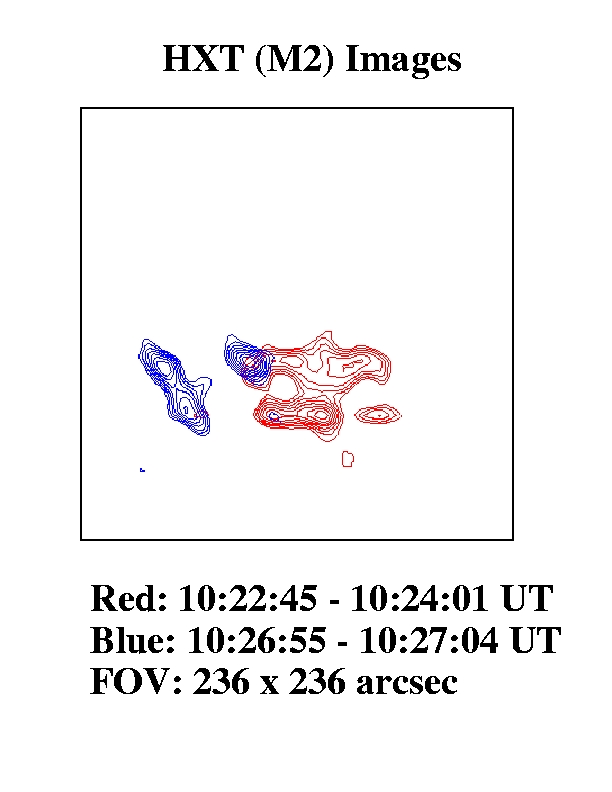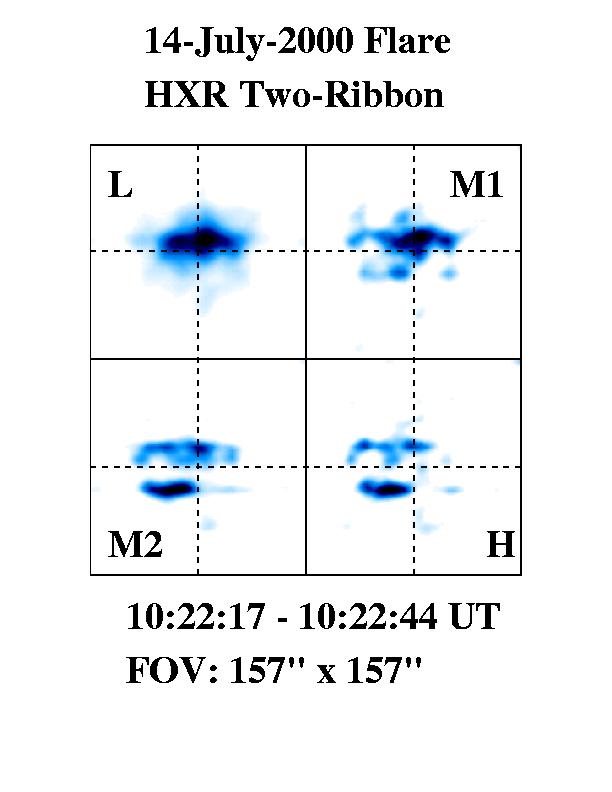
The Yohkoh satellite observed the early phase (~ 10:11 - 10:13 UT) and some of the impulsive phase (~ 10:19:40 UT - ) in an X-class event which occurred on 14 July 2000. In soft X-rays, a large arcade structure is observed with Yohkoh/SXT. Its width and length are ~ 30,000 km and ~ 120,000 km, respectively. The western half of the arcade is almost aligned in the E-W direction, and the eastern half in the NE-SW direction. The arcade brightens first in the west and then the brightening moves to the east.

After the gap in Yohkoh observations, hard X-ray intensity increases at ~ 10:24 UT, reaches its peak at ~ 10:27 UT, and goes back to the previous intensity level at ~ 10:30 UT.

Before this spike, a two-ribbon structure is clearly observed in the energy range above 30 keV. The ribbons correspond to footpoints of the western half of the soft X-ray arcade. We have not previously observed such a clear ribbon-like structure in hard X-rays, although Yohkoh/HXT has observed more than 2,000 flares in its first nine years. Most hard X-ray flares have shown a single source, double sources, or multiple point-like sources in the energy range above 30 keV. Why has the hard X-ray observation of a two-ribbon structure proven so difficult, when it is so common in H-alpha? This observation suggests that electrons are in fact accelerated in the whole system of this arcade, not merely in a particular dominant loop. We suggest that the answer to the question above is that in this flare the intense regions along the ribbons are comparably bright, consistent with the beautiful regularity of the arcade as seen in soft X-rays. The acceleration region moves horizontally along the arcade during the flare, illuminating loop footpoints sequentially.